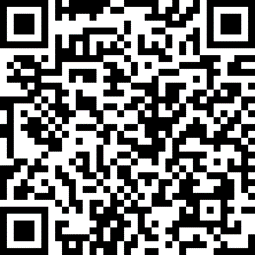非妊娠患者
对于疑似肾绞痛的所有非妊娠成人患者,要求行紧急(就诊后 24 小时内)低剂量计算机体层成像平扫(non-contrast computed tomography, NCCT)。[15]National Institute for Health and Care Excellence. Renal and ureteric stones: assessment and management. January 2019 [internet publication].https://www.nice.org.uk/guidance/ng118
对于疑似肾绞痛的所有儿童或青少年患者(16 岁以下),要求行紧急(就诊后 24 小时内)超声检查。[15]National Institute for Health and Care Excellence. Renal and ureteric stones: assessment and management. January 2019 [internet publication].https://www.nice.org.uk/guidance/ng118
如果超声检查后仍不能确诊,请考虑进行低剂量 NCCT。[31]Türk C, Neisius A, Petrik A, et al. European Association of Urology. Urolithiasis. 2020 [internet publication].https://uroweb.org/guideline/urolithiasis/[33]Fulgham PF, Assimos DG, Pearle MS, et al. Clinical effectiveness protocols for imaging in the management of ureteral calculous disease: AUA Technology Assessment. J Urol. 2013 Apr;189(4):1203-13.http://www.jurology.com/article/S0022-5347%2812%2905259-7/fulltexthttp://www.ncbi.nlm.nih.gov/pubmed/23085059?tool=bestpractice.com[15]National Institute for Health and Care Excellence. Renal and ureteric stones: assessment and management. January 2019 [internet publication].https://www.nice.org.uk/guidance/ng118
NCCT 的敏感性和特异性高,因此是非妊娠成人的首选影像学检查。NCCT 可准确确定有无结石以及结石的大小和部位;如果检测结果为阴性,则基本上可排除肾结石。对于 BMI ≤30 kg/m² 的患者应首选低剂量 CT 平扫(<4 mSv),因为这种影像学检查既能限制潜在辐射暴露量,又可确保灵敏度和特异度均不低于 90%。[33]Fulgham PF, Assimos DG, Pearle MS, et al. Clinical effectiveness protocols for imaging in the management of ureteral calculous disease: AUA Technology Assessment. J Urol. 2013 Apr;189(4):1203-13.http://www.jurology.com/article/S0022-5347%2812%2905259-7/fulltexthttp://www.ncbi.nlm.nih.gov/pubmed/23085059?tool=bestpractice.com 不建议对 BMI >30 kg/m² 的患者进行低剂量 CT 扫描,因为其对该患者人群的敏感性和特异性较低。已知有结石的患者新发肾绞痛时也应进行 CT 扫描,因为结石经常移位或会形成新结石。请记住,重复 CT 扫描会带来显著辐射暴露风险,应结合临床情况作出判断。
如果 NCCT 定位片未显示患者结石,请通过腹部肾、输尿管及膀胱(kidney-ureter-bladder radiography, KUB)平片确定结石是否不透射线并监测结石病的发作情况。[33]Fulgham PF, Assimos DG, Pearle MS, et al. Clinical effectiveness protocols for imaging in the management of ureteral calculous disease: AUA Technology Assessment. J Urol. 2013 Apr;189(4):1203-13.http://www.jurology.com/article/S0022-5347%2812%2905259-7/fulltexthttp://www.ncbi.nlm.nih.gov/pubmed/23085059?tool=bestpractice.com 如果 NCCT 定位片显示患者结石,考虑在随访时进行 KUB。在英国的临床实践中,经常在患者初次就诊时进行 NCCT 和 KUB 两项检查。
肾脏超声可用于诊断肾结石,尤其适用于妊娠期(请参阅下文孕妇章节)、儿童或建议避免辐射暴露的其他情况,但操作者的技术水平会影响检查效果,诊断输尿管中段和远端结石的敏感性也较低。目前已提议将肾脏超声联合 KUB 检查法作为 CT 扫描不能进行或条件不具备时的一种合理的初始评估方案。有建议称,肾脏超声检查联合 KUB 是对已知有不透射线结石既往史的患者进行随访影像学检查的一种可行选择;据报道,这种联合影像学检查的灵敏度为 58%-100%,特异度为 37%-100%。[34]Ripollés T, Agramunt M, Errando J, et al. Suspected ureteral colic: plain film and sonography vs unenhanced helical CT. A prospective study in 66 patients. Eur Radiol. 2004 Jan;14(1):129-36.http://www.ncbi.nlm.nih.gov/pubmed/12819916?tool=bestpractice.com[35]Gorelik U, Ulish Y, Yagil Y. The use of standard imaging techniques and their diagnostic value in the workup of renal colic in the setting of intractable flank pain. Urology. 1996 May;47(5):637-42.http://www.ncbi.nlm.nih.gov/pubmed/8650858?tool=bestpractice.com[36]Dalla Palma L, Stacul F, Bazzocchi M, et al. Ultrasonography and plain film versus intravenous urography in ureteric colic. Clin Radiol. 1993 May;47(5):333-6.http://www.ncbi.nlm.nih.gov/pubmed/8508595?tool=bestpractice.com
在因疑似肾结石而到急诊科就诊的患者中对肾脏超声和 CT 作为初始诊断性检查的安全性和有效性进行了对比。一项大型多中心研究的结果显示,在这类患者中,接受 CT 或肾脏超声检查的患者在高危诊断、严重不良事件、后续到急诊科就诊或住院等指标方面并无显著性差异。[37]Smith-Bindman R, Aubin C, Bailitz J, et al. Ultrasonography versus computed tomography for suspected nephrolithiasis. N Engl J Med. 2014 Sep 18;371(12):1100-10.http://www.nejm.org/doi/full/10.1056/NEJMoa1404446http://www.ncbi.nlm.nih.gov/pubmed/25229916?tool=bestpractice.com 另一项多中心随机试验发现,在急诊科(进行腹部超声或 CT 之后)诊断为肾结石的 1666 名患者中,大部分患者(78%)最终在接受择期干预之前进行了 CT 检查。由急诊科医生进行超声检查的患者,接受干预前进行 CT 检查的可能性,是由放射科医生进行超声检查患者的 2.6 倍。超声作为初始影像学检查并不会显著延迟后续干预。[38]Metzler IS, Smith-Bindman R, Moghadassi M, et al. Emergency department imaging modality effect on surgical management of nephrolithiasis: a multicenter, randomized clinical trial. J Urol. 2017 Mar;197(3 pt 1):710-4.http://www.ncbi.nlm.nih.gov/pubmed/27773846?tool=bestpractice.com
孕妇
如果患者怀孕,要求行紧急(就诊后 24 小时内)肾脏超声检查替代 CT。[31]Türk C, Neisius A, Petrik A, et al. European Association of Urology. Urolithiasis. 2020 [internet publication].https://uroweb.org/guideline/urolithiasis/[15]National Institute for Health and Care Excellence. Renal and ureteric stones: assessment and management. January 2019 [internet publication].https://www.nice.org.uk/guidance/ng118
在孕妇中,如果肾脏超声无法确诊,经阴道超声检查可以通过观察输尿管扩张是否超出骨盆边缘来辅助诊断;同时此检查方法还可诊断远端输尿管结石。
磁共振成像 (MRI) 是一种无放射性的检查方法,作为二线影像学检查,因 MRI 无法直接显示结石,只能通过观察集合系统中的充盈缺损来确定是否存在结石。[31]Türk C, Neisius A, Petrik A, et al. European Association of Urology. Urolithiasis. 2020 [internet publication].https://uroweb.org/guideline/urolithiasis/
照射剂量<50 mGy 不会导致胎儿畸形或流产的风险增加,因此,为了辅助疑难病例的诊断,低剂量 CT(<4 mGy)可作为最终检查方案,在妊娠中期和后期使用。[31]Türk C, Neisius A, Petrik A, et al. European Association of Urology. Urolithiasis. 2020 [internet publication].https://uroweb.org/guideline/urolithiasis/[33]Fulgham PF, Assimos DG, Pearle MS, et al. Clinical effectiveness protocols for imaging in the management of ureteral calculous disease: AUA Technology Assessment. J Urol. 2013 Apr;189(4):1203-13.http://www.jurology.com/article/S0022-5347%2812%2905259-7/fulltexthttp://www.ncbi.nlm.nih.gov/pubmed/23085059?tool=bestpractice.com[39]ACOG Committee on Obstetric Practice. Committee opinion no. 723: Guidelines for diagnostic imaging during pregnancy and lactation. Obstet Gynecol. 2017 Oct;130(4):e210-6.https://www.acog.org/-/media/Committee-Opinions/Committee-on-Obstetric-Practice/co723.pdf?dmc=1&ts=20180127T0150226583http://www.ncbi.nlm.nih.gov/pubmed/28937575?tool=bestpractice.com[40]Valovska MI, Pais VM Jr. Contemporary best practice urolithiasis in pregnancy. Ther Adv Urol. 2018 Apr;10(4):127-38.https://www.doi.org/10.1177/1756287218754765http://www.ncbi.nlm.nih.gov/pubmed/29560029?tool=bestpractice.com
